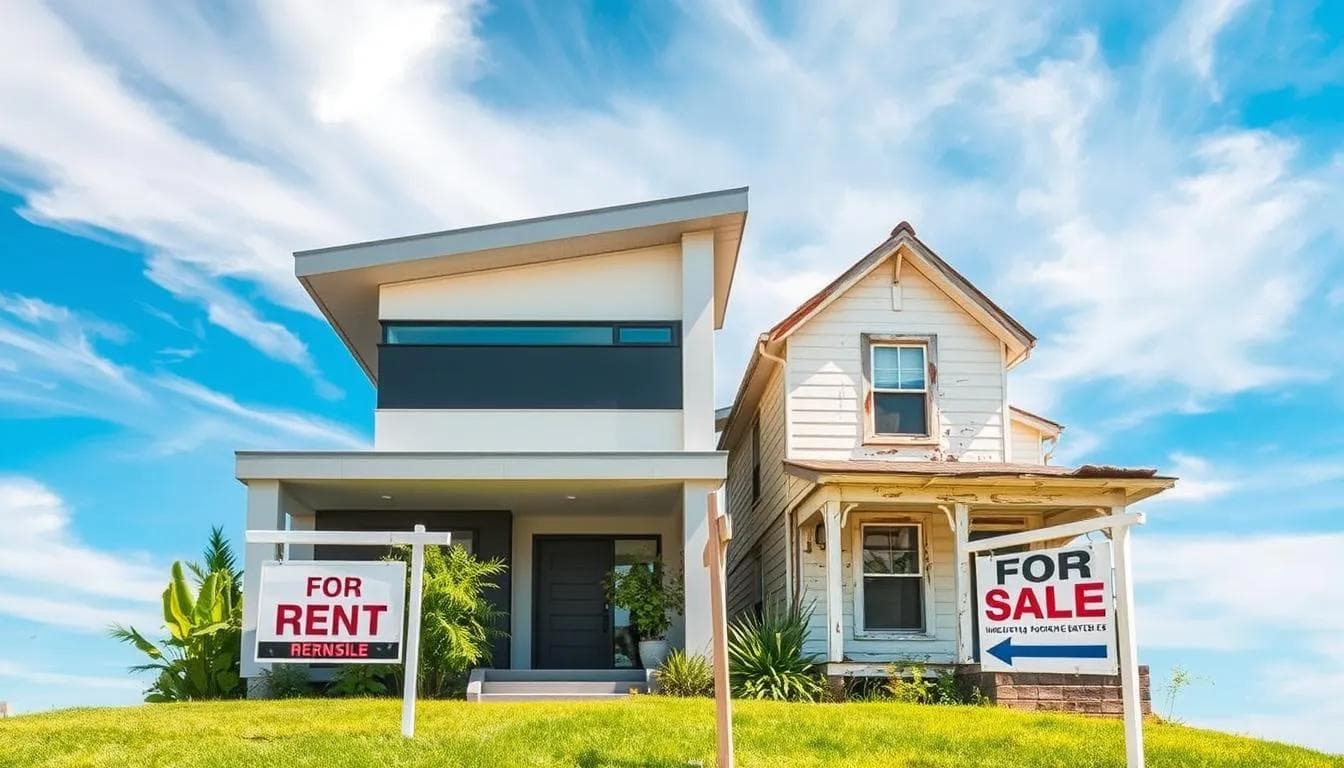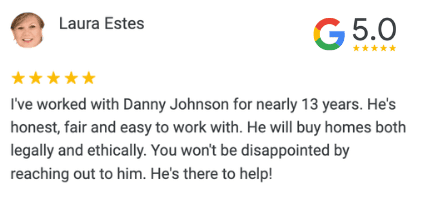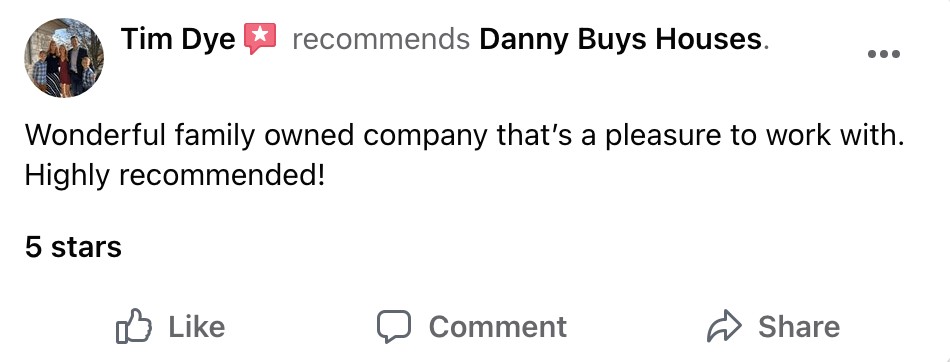
Fix and Flip vs Long Term Rental Approaches Guide
By Danny Johnson | Updated 3/30/2025, 2:10:53 PM
Discover the pros and cons of fix and flip versus long-term rental properties. Learn which real estate investing strategy suits your goals for wealth-building.
- Key Takeaways
- Understanding Fix and Flip vs Long Term Rental Approaches
- What Defines Fix and Flip Strategy
- Long-term Rental Investment Fundamentals
- Key Market Considerations for Both Approaches
- Financial Analysis of Fix and Flip Investments
- Initial Investment Requirements
- Renovation Cost Considerations
- Projected Returns and Timeline
- Tax Implications for Flipping
- Long-term Rental Property Economics
🗂 Table of Contents
Let's look at what typically happens after you sell your house to a cash home buyer.
Imagine standing in a kitchen with peeling paint and an old fridge. Yet, you see only potential. Real estate investing is all about finding opportunities. Whether you want a quick flip or steady rental income, there's a path for you.
Real estate investing is like a choose-your-own-adventure book. You can choose the thrill of fix and flip, turning ugly properties into beautiful ones in 4-12 months. Or, you can take the slow path of long-term rentals, building wealth over time. The right choice depends on your goals, resources, and how much risk you're willing to take.
In cities like Phoenix, Atlanta, and Tampa, fix and flip investors can earn up to 24.3% return. These cities also see strong home price growth, with Tampa leading at 7.2% annually. On the other hand, long-term rental investors in Dallas-Fort Worth, Charlotte, and Nashville enjoy high occupancy rates and rent growth, with Nashville seeing a 10.2% increase.
Fix and flip offers quick profits, while long-term rentals provide steady income and potential for appreciation. A typical fix and flip deal might require a $25,000 down payment on a $250,000 project, yielding a 70.7% ROI in 6 months. Long-term rentals, like build-to-rent investments, can generate a 9.5% cap rate with consistent cash flow.

Are you ready to start your real estate investing journey? Whether you're drawn to the fast-paced world of flipping or the steady growth of rentals, there's a strategy for you. Let's explore further and find your path to real estate riches!
Key Takeaways
- Fix and flip can yield quick profits in 4-12 months
- Long-term rentals offer steady income and appreciation potential
- Market conditions greatly impact investment success
- Fix and flip ROI ranges from 21.7% to 24.3% in hot markets
- Rental properties can achieve 95%+ occupancy rates in high-growth areas
- Both strategies have unique financial and tax implications
- Your choice should align with your investment goals and risk tolerance
Understanding Fix and Flip vs Long Term Rental Approaches
Real estate investing has many ways to build wealth. Two main strategies are fix and flip and long-term rentals. Let's look at what makes each unique.

What Defines Fix and Flip Strategy
Fix and flip is a quick real estate strategy. Investors buy low, fix up, and sell for profit. It needs a good sense of market value and project management skills.
Flipping can make profits in 4-12 months. In Phoenix, the average flip ROI is 21.7%. Atlanta sees 24.3%. Cash is essential, needing 20-25% of the property's value for a down payment and renovation funds.
Long-term Rental Investment Fundamentals
Long-term rentals offer a steady income path. Investors rent out properties, earning money over time. It's a passive way to build wealth, ideal for those wanting consistent cash flow.
Rental properties can earn 6-12% annually. In Dallas-Fort Worth, rent growth is 8.3% year-over-year with a 96% occupancy rate. Long-term rentals provide passive income through consistent rent, building equity over time.
Key Market Considerations for Both Approaches
Success in either strategy depends on market knowledge. For flipping, knowing renovation costs and resale potential is key. A real estate appraisal helps determine a property's true value. For rentals, location, tenant demand, and property management are crucial.
Insurance is vital for both strategies. Flippers need coverage during renovations, while landlords require long-term property insurance. Remember, market conditions greatly impact both approaches. Always stay informed about local real estate trends.
Financial Analysis of Fix and Flip Investments
Fix and flip investments can be a wild ride for your money. Let's explore the financial details of this exciting real estate strategy.
Initial Investment Requirements
Flipping houses needs a lot of money upfront. You're not just buying a house; you're also funding a big renovation. Many investors use hard money loans or cash for their flips. The initial investment can be between $100,000 to $250,000, based on the market.

Renovation Cost Considerations
Renovation costs are a big part of your budget. Investors usually spend $20,000 to $60,000 on makeovers. But, 60% of flippers often underestimate these costs. It's smart to save extra money for any unexpected problems that might arise in 25% of projects.
Projected Returns and Timeline
The average return on investment for fix and flips is 20% to 30%. In 2022, the average profit was around $66,000. Most flips sell within 12 months, making them a fast way to get returns compared to other real estate investments. Understanding market trends is crucial to get the best return.
Tax Implications for Flipping
Flipping houses has fewer tax benefits than long-term rentals. Profits are usually taxed as regular income, not capital gains. If you want passive income or tax benefits, think about turning your flip into a rental property.
Successful flipping needs a deep understanding of renovation costs, market trends, and financial planning. It's not just about buying low and selling high. It's about adding value through smart improvements and knowing when to sell.
Long-term Rental Property Economics
Long-term rental properties are a smart way to grow your wealth. It's like planting a money tree that grows over time. You're not just collecting rent; you're building a real estate portfolio that can give you steady cash flow and possibly increase in value.
Let's look at the economics. When you invest in a rental property, you get two main returns: rental income and property appreciation. The rental income should cover your mortgage, taxes, insurance, and leave some profit. It's like having tenants pay off your loan while you build equity. Plus, real estate values tend to go up over time, increasing your wealth.
But, it's not all easy. Vacancy rates can cut into your profits if your property is empty. That's why picking the right real estate market is key. A management company can help with daily tasks, but it costs extra. The goal is to find a balance where your investment makes positive cash flow and grows in value over time.
Remember, this is a long-term game, not a quick win. Unlike the fast turnaround of fix and flip, long-term rentals need patience and a solid plan. But with careful planning and the right properties, you can create a stable income stream and set yourself up for financial success. It's about playing the long game in real estate investing, and trust me, it can be a game-changer for your financial future.
Frequently Asked Questions
In this section we will answer the most common questions to fix and flip or rent
What is the primary difference between fix-and-flip and rental property investment strategies?
Fix-and-flip involves buying a property, renovating it, and selling for a profit quickly, while rental property investment focuses on purchasing properties to generate ongoing income through leases.
How do market conditions influence the decision to fix-and-flip versus rent?
In a hot real estate market with rising property values, fix-and-flip might yield quick profits. In contrast, stable or declining markets favor renting for consistent cash flow over time.
What financial factors should be considered when choosing between fixing and flipping or renting?
Consider renovation costs, potential sale price vs. rental income, holding costs like taxesinsurance during renovations, financing options, cash flow projections as a landlord, and long-term appreciation potential.
What are the tax implications associated with fix-and-flip compared to rental properties?
Fix-and-flips can incur higher short-term capital gains taxes due to quick sales. Rental properties offer tax advantages such as depreciation deductions and potentially lower long-term capital gains rates.
How does risk assessment differ between fix-and-flip projects and renting out properties?
Fix-and-flip carries risks of cost overruns and market volatility affecting resale value. Renting involves tenant management challenges but offers more predictable income streams if managed well.

AUTHOR
Danny Johnson
Owner and Founder at Danny Buys Houses
Danny Johnson is an experienced real estate investor who has been buying houses for cash since 2003. As owner of Danny Buys Houses, Danny's goal is to help homeowners sell their house fast, regardless of the situation, so they can move on with their life.
Danny has been featured in publications such as Forbes, Realtor.com, BiggerPockets, Yahoo Finance, US News, and more. He is also the author of the book 'Flipping Houses Exposed'.




